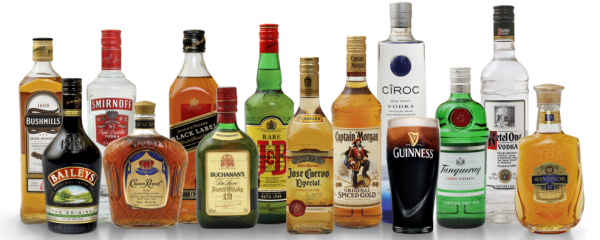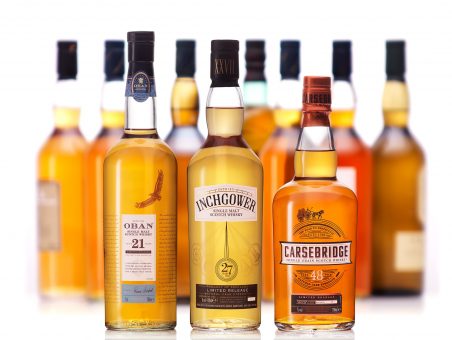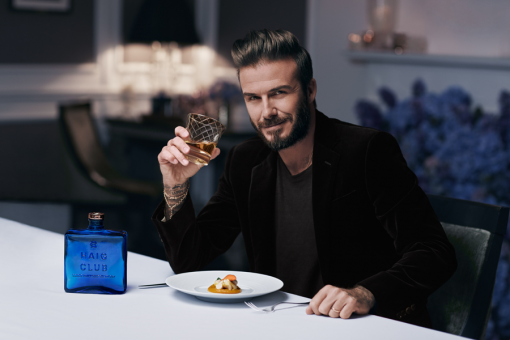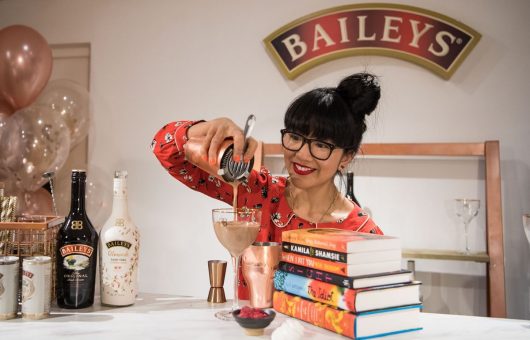Spotlight: Diageo, Toasting New Continents of Consumers
June 04, 2018If you don’t know the name Diageo, that’s because Diageo wants it that way. This Knowledge Leader would prefer you to know the names Johnnie Walker, Smirnoff, Baileys, Captain Morgan, Tanqueray and Guinness, the group it calls its “Global Giants,” representing 41% of the firm’s net sales. Mix in a second tier of brands – Crown Royal, J&B, Buchanan’s and Windsor whiskies, Ciroc and Ketel One vodkas — and you have Diageo’s secret recipe for innovation: its global portfolio of spirits and beer brands.
Followers of the Knowledge Leaders Strategy know we measure a firm’s intangible assets in five areas: R&D, brands, information technology, human resources and organizational capital. A global leader in its industry worldwide, Diageo invests in all five, but it is this firm’s deep reservoir of brand knowledge in particular that is the key to its future growth.
Diageo’s innovation strategy is focused on two distinct markets. In the emerging markets, Diageo hopes to capture a wave of demographic changes – a new group of about 500 million young adults who will be coming into legal age worldwide, more than half of whom live in India and Africa. With about 730 million new consumers able to afford to drink alcohol over the next decade, 85% of them will be in the developing markets. Diageo aims to shape the drinking habits of an emerging middle class by offering famous brands like Crown Royal and J&B at affordable prices.
In developed markets, such as the US and Japan, where populations are growing more slowly and disposable income is higher, Diageo takes a different tack. The firm is aiming to reach consumers seeking not to drink more, but rather “better” in effort to maintain a balanced lifestyle. These are consumers with highly developed tastes and disposable income, and the company is counting on them paying a premium for “reserve” choices, luxury interpretations of its traditional brands like Johnnie Walker Blue and Gold Label, Don Julio Tequila and Bulleit Burbon. Since about two thirds of Diageo’s sales are of its premium core brands, keeping this core vibrant is a key focus. The firm specifically targets trendsetter bartenders and consumers who want to keep up with limited edition “occasion” releases. Diageo recently rebranded Johnnie Walker Platinum label for US customers as Johnnie Walker Aged 18 Years with new, sophisticated packaging. This year it plans to release Jane Walker, a limited-edition Johnnie Walker Black Label aimed at increasing the 29.6% of US whiskey drinkers who are women.
For Diageo, the key to building the right “experience” for new and returning consumers is understanding local preferences. That’s why this Knowledge Leader is structured around geographic markets, building country-specific strategies for each of its global brands. New drink innovations can be launched globally or locally. Embedded teams on the ground in Asia Pacific, North America, Europe/Russia/Turkey, Africa, and Latin America/Caribbean identify locally relevant trends for new drinks or new twists on old ones. For instance, in Africa, Diageo sources ingredients from local farmers. Last year 76% of raw materials were sourced locally, and Diageo aims to reach 80% from 50,000 local African farmers by 2020.
The firm’s innovation strategy is focused on expanding to new adopters. “For example, we looked at the barriers to whiskey drinking — how do you persuade a new generation of consumers that they ought to try whiskey?” Diageo CEO Ivan Menezes said in an interview last year. “We came up with Haig Club, an introduction to Scotch and for consumers of lighter whiskies. It has the substance and quality of Scotch with a fresh new look and is blended to match with food in China, one of the initial launch markets, where David Beckham, the face of Haig Club, has extraordinary name recognition.”
Other new spirits include Orijin, a bitter-sweet fusion of specially selected African herbs and fruits that has been successful in Nigeria, and Jinzu, a gin and Japanese sake blend. But for the most part, new “line extension” brands, as Menezes calls them, are rare.
The majority of Diageo’s innovations involve evolutions of existing brands, like integrating with current flavor trends, for example. “Things that are familiar but with a twist,” Sian Anderson Diageo’s Technical Innovation Director for Europe, told The Telegraph during a tour of Diageo’s UK innovation lab. There, liquid scientists in lab coats are “encouraged to play” and “often engage in internal competitions to see who can come up with the best drink – Diageo’s version of an office ‘bake-off.’ In recent years, employees have battled it out over recipes for sloe gin, limoncello and elderflower champagne.”
Recent innovations from the labs include Crown Royal Apple, Crown Royal Vanilla, Baileys Chocolat Luxe and Pimm’s Cider Cup, targeting new millennial and female consumers, and “ready to drink” options like Smirnoff Ice. The firm also has introducied holistic lifestyle spirits like Smirnoff Seltzer in the US and Smirnoff Pure in Australia — both low in sugar — and Bailey’s Almande, a gluten-free, dairy-free, vegan almond milk liqueur.
Anderson and her team may be onto something. “The best hit makers are gifted at creating moments of meaning by marrying new and old, anxiety and understanding,” writes Derek Thompson, is his best-selling book, Hit Makers: How to Succeed in an Age of Distraction. Research shows that people prefer paintings they’ve seen before, which is why for a marketing company like Diageo, the trick is learning to frame new ideas as tweaks of old ideas, “to make your audience see the familiarity behind the surprise,” Thompson writes.
Clues to Diageo’s future pipeline can be found in current investments. Last month, Diageo doubled down on the future of Scotch whisky, announcing a £1 billion investment in its Scotch whiskey operations and plans to build Scotland’s biggest “whiskey tourism” destination with a state-of-the-art Johnnie Walker immersive visitor experience in Edinburgh, aimed at welcoming Scotch fans from around the world.
Diageo has 200+ brands and 30,400 employees. Its drinks are available in 180 countries and 143 production sites.








